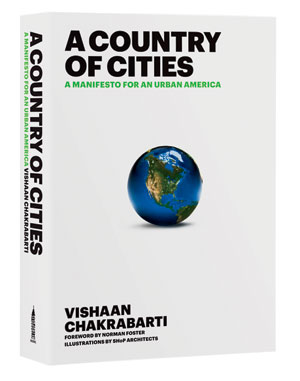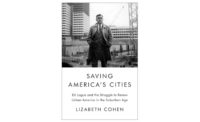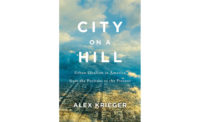Bright Lights, Big Cities
Architect, planner, and one-time developer Vishaan Chakrabarti asks us to imagine a United States in which government invests in high-speed trains linking high-density cities and does not subsidize suburban sprawl. He admits this sounds a bit naive in an era of political paralysis and at a time when the middle class and wealthy—no matter their political affiliation—enjoy perks like the mortgage-interest deduction that help perpetuate the status quo. But he builds his argument with straightforward prose and lots of easy-to-read charts and graphs.

Hyper-dense cities are more efficient in their use of limited resources such as energy, money, and time, he says. They also offer a better quality of living by reducing commuting times, putting people closer to cultural attractions, and freeing up land for parks and outdoor recreation. “A host of scholars from different points along the political spectrum, including economists, environmentalists, and public-health experts, have made a variety of findings supporting the central premise that American cities offer a cure for many of our most urgent problems,” he writes.
What's holding us back from solving these problems, argues Chakrabarti, is a set of attitudes, including an anti-urban bias rooted in Jeffersonian ideals and a fear of big development taught at even the best architecture schools. The author's experience as a director at the New York City Planning Commission, a partner in the architecture firm SHoP, and a former executive with the big developer Related Companies gives him insight on the situation we face. But it also comes with some baggage, raising questions about his impartiality, especially when he uses projects by SHoP and Related to illustrate his points.
He tackles the issue of affordability by proposing that we phase out the mortgage interest deduction and use part of that money to help subsidize low-income housing units in mixed-income projects. And he argues that employing prefabrication in high-rise construction will reduce the cost of urban housing. He admits that the book's scope does not include all parts of the country. “Instead of attempting to retool failing suburbs, and while remaining respectful of small towns across this great nation, I focus ... almost entirely on ... our big cities,” he says. Such an approach helps him map out a forceful agenda for urban development—and perhaps lays the groundwork for another career switch, into New York City politics. But it left me wondering what he thinks we should do with our suburbs, many of which are experiencing high rates of foreclosure and increasing levels of poverty. I guess that's another book. In the meanwhile, this one delivers a clarion call to build our cities bigger, taller, and better.







Post a comment to this article
Report Abusive Comment